Watermelon Soap Recipe With Skin Brightening Vitamin C for Glowing Ski

Naturally rich in vitamin C, this cold process watermelon soap recipe is an easy way to enjoy the skin care benefits of vitamin C without irritating sensitive skin. Discover the benefits of using this DIY soap as part of your daily skin care routine. Plus learn how to make this natural summer soap from scratch in the comfort of your own home.
DIY Watermelon Soap
One of my favorite things about summer is eating juicy, ripe watermelon! Sticky, sweet and delicious, watermelon is full of nutrients our bodies love like vitamins A, B6 and C, lycopene, antioxidants and amino acids. However, it doesn’t have to be summer to enjoy the health benefits that watermelon has to offer. Not only is watermelon fruit powder available year round, but when used in natural beauty products your skin can enjoy some of the same healthy benefits.
An easy way to take advantage of the beauty benefits of watermelon is to make your own cold process watermelon soap recipe. Those nutrients I mentioned? Well, their properties make watermelon a perfect choice for natural, anti-aging skin care.
After all, who doesn’t want glowing skin? We all know that using a vitamin C serum is a tried and true anti-aging skin care solution for maturing skin. Packed with antioxidants, vitamin C helps to even out skin tone, prevent hyperpigmentation, brighten skin and aid in skin’s natural regeneration process. But really, who wants to add more products to their existing routine?
Fortunately, it’s easy to give your beauty routine an upgrade. All you need to do is swap your regular bar soap with a DIY watermelon soap! It’s well suited for all skin types — even those with sensitive skin!
My watermelon cold process soap recipe is an easy way to add vitamin C to your daily beauty regimen. It’s formulated using real watermelon powder which contains vitamin C along with other nutrients that skin loves! As it’s a wash off product, you’ll find that is a great alternative if serums irritate your skin.
Ready to learn more? This soap tutorial will teach you how to incorporate watermelon fruit powder into your homemade soap recipes for your natural, anti-aging skin care routine. Plus you’ll learn about all the watermelon soap benefits and discover answers to common questions about making this amazing summer soap recipe.
What Is Watermelon Soap Good For?
Watermelon soap is great for everyday summer skin care and all skin types. Due to the unique properties of watermelon fruit, homemade soap made with this ingredient not only cleanses skin, but it also helps to hydrate skin. Plus, the high vitamin C content makes it ideal for maturing skin as vitamin C is used to reduce hyperpigmentation and age spots. Therefore, if your skin is stressed due to sun exposure, or you have skin damage, you can help give your skin some love by incorporating this summer fruit into your handmade soap recipes.
Is Watermelon Powder Good for Skin?
I formulated my watermelon soap bars with natural watermelon powder — a dried version of this summer fruit. I chose to use this ingredient because watermelon powder is such an excellent for skin care. It’s what gives this homemade soap its natural, anti-aging beauty benefits. It also helps to promote healthy looking, glowing skin for summer!
Watermelon Skin Benefits
There are so many wonderful benefits you’ll enjoy when using watermelon soap as part of your summer skin care routine. Following are my favorite watermelon skin benefits:
- Watermelon fruit contains vitamins A and C, in addition to lycopene. These nutrients have been shown to help fight the free radicals that cause aging.
- Vitamin A has wonderful toning properties that can help to shrink pores as well as combat acne.
- Vitamin C as well as the antioxidant glutathione work as skin lighteners to help brighten skin and fade dark spots. It’s also possible they may help to prevent hyperpigmentation all together through regular use.
- As some of us with sensitive skin can’t always use a vitamin C serum without irritation, this DIY watermelon soap makes an ideal alternative! With it being a wash off product, this cold process summer soap offers a gentle alternative to serums that may normally irritate skin.
- Thanks to the high vitamin C content found in watermelon body soap, it’s great at naturally exfoliating skin.
- Like many citrus soap recipes, the watermelon fruit powder found in this soap also helps to combat acne.
- As watermelon fruit is gentle on skin, it’s suitable for all skin types, including sensitive skin.
- Like DIY orange soaps, this watermelon soap recipe also helps to soothe skin inflammation.
Watermelon Cold Process Soap Recipe
© Rebecca D. Dillon
Watermelon soap is a simple way to turn your shower into an everyday at home spa day! Thanks to the watermelon skin benefits this soap provides, it’s an easy and affordable way to get glowing skin.
My watermelon scented soap bars are formulated using a 6% superfat with a water discount that is 30.5% of the oil weight. This cold process summer soap recipe yields six homemade soap bars when using this six-cavity rectangle silicone soap mold.
Watermelon Soap Bar Ingredients:
Cold process soap is a true soap. Therefore, it is made using fats (oils and butters) and an alkali (lye.) When combined, these ingredients go through a chemical process called saponification. Once saponified, the lye is completely gone leaving only soap behind. Following are the ingredients you will need to make a cold process soap recipe with watermelon fruit powder.
Soap Making Fats (Oils and Butters)
These are the oils and butters you will use to make this amazing summer soap for skin:
- .8 oz. castor oil (5%): This carrier oil adds skin conditioning properties to cold process soap. It also helps to create a stable lather that is low, dense, and creamy in texture.
- 4 oz. refined coconut oil (25%): When used to make cold process soap, coconut oil helps to increase the lather and cleansing capabilities. Additionally, coconut oil helps to increase the hardness of the bar and, when used in moderation, can also help to hydrate skin.
- 7.2 oz. pomace olive oil (45%): A cheaper alternative to virgin olive oil, pomace olive oil is perfect for making cold process soap. Not only does it trace faster than the other types of olive oil, it also helps to create a hard bar with a gentle, stable lather. It also has moisturizing and skin conditioning properties.
- 2.4 oz. safflower oil (15%): Safflower oil is another carrier oils that gives cold press soap both skin conditioning and moisturizing properties. Not only is it an affordable option when learning how to make soap, but it’s also available at most grocery stores.
- 1.6 oz. refined shea butter (10%): This moisturizing body butter lends soap skin conditioning properties and helps create a long lasting, hard bar of soap with a stable lather. When used on skin it also aids in the fight against acne due to its composition as well as its anti-inflammatory and antioxidant skin care properties.
Lye-Water Mixture (Alkali)
Here are the amounts of water and lye necessary to make this summer scented soap recipe:
- 4.8. fl. oz. distilled water: The water in this watermelon soap bar recipe is used to both dilute and dissolve the lye so that it can mixed into the soap making fats. It’s important to use distilled water as tap water contains trace minerals that may react negatively with the sodium hydroxide.
- 2.1 oz. lye/sodium hydroxide: Sodium hydroxide, also known as lye, is an alkali. When mixed with fats, it causes a chemical reaction called saponification that makes soap.
Ingredients Added at Trace
You will these additional ingredients to your soap making fats once they’ve been mixed with the lye-water to create a soap batter:
- 1 tablespoon watermelon fruit powder: This ingredient provides watermelon soap with its amazing anti-aging skin care benefits. You can purchase this ingredient online. Alternately, you can also learn how to make fruit powders from scratch.
- 1 teaspoon poppy seeds: Poppyseeds, while optional, represent watermelon seeds in this pink cold process soap. They also give it exfoliating properties to help slough off dead skin cells to reveal brighter, glowing skin.
- 1 teaspoon raspberry red mica (or similar): A bold pink mica powder gives this soap its gorgeous color.
- 1 oz. watermelon fragrance oil: This ingredient is used to scent your homemade soaps with a summer watermelon fragrance.
Tools and Equipment
You will need the following tools and equipment to make this cold process soap recipe:
- Digital scale: You will need a digital scale to weigh out most of the ingredients called for in this soap tutorial.
- Silicone mold: A silicone six-cavity mold is ideal for making this homemade soap. As the mold is silicone and contains individual cavities for making soap bars, there’s no need to line the mold or cut the finished soap into bars.
- Digital laser thermometer: You need a thermometer so you can accurately judge the temperature of both the lye-water and soap making oils before you mix them together.
- Goggles: Protective eyewear will prevent damage to your eyes if the soap batter or lye-water is splashed or spills.
- Gloves: Nitrile gloves also protect hands from accidental burns that can occur when working with lye.
- Pitchers and measuring cups: You’ll need a heat safe pitcher or container to mix your lye-water in as well as to weigh out the soap making ingredients.
- Non-aluminum heat safe container: This will be used to heat and mix the soap batter.
- Crock Pot, stove or microwave: A heat source is necessary to melt the ingredients used to make soap.
- Immersion blender: Also known as a stick or hand blender, this tool makes it quick and easy to mix your scented summer soap and bring it to trace.
- Utensil or spatula (Non-aluminum): A spatula or other utensil makes it easy to get all of the soap out of the pot and into the prepared soap mold. It is also used to smooth down the layers and tops of soap.
Tips for Making Cold Process Watermelon Soap
There are a few things to know if you’ve never made cold process soap. For starters, it’s of utmost importance that you never use any aluminum containers or utensils when making cold process soap.
I know someone who made of the mistake of doing this recently not realizing her soapmaking pot was aluminum and the video documentation was quite terrifying. The combination of aluminum and lye (sodium hydroxide) creates both hydrogen gas and sodium aluminate. And they aren’t something to fool around with. So if you’re not sure whether your container is made of aluminum or not, err on the side of caution.
In addition, you will also need to wear eye protection, a safety mask and gloves as well as have heat safe containers in which to mix the lye-water and soap making oils.
If you’ve never made cold process soap before, then I highly recommend that you first read my tutorial on how to make cold process soap from scratch. You may also want to start with a more basic soap recipe such as this hydrating Bastille soap recipe.
How to Make Watermelon Soap
Here is how to make homemade watermelon soap with real watermelon fruit:
- Begin by measuring out the distilled water in a heat safe container or pitcher. Then, using a digital scale, weigh out the lye. Slowly pour the lye into the water in a well ventilated area and mix until the lye has completely dissolved. Then set the lye-water aside in a safe location to cool.
- Now weigh out the soapmaking oils and shea butter. Combine in a separate heat safe container. Then gently melt the shea butter and oils together either at 50% power in the microwave, in a crock pot or over medium-low heat on the stove. Once the oils have been heated and the shea butter has fully melted, remove from heat and set aside.
- Once your soapmaking oils and the lye-water reach around 95°F (and are roughly within 10 degrees of one another) you are ready to make soap!
- Using measuring spoons, measure out the watermelon powder, poppy seeds and mica. Add to the container with the soapmaking oils then mix briefly with an immersion or stick blender.
- Then slowly pour the lye-water into the oils. Mix with your immersion blender until the soap reaches a light trace.
- Once the soap has begun to trace, weigh out and add the melon ball fragrance oil. Then mix again until the fragrance oil is evenly combined throughout and the soap rethickens.
- Pour the soap into the cavities of your silicone mold using a spatula to smooth down the tops. Then lightly cover the mold with plastic wrap.
- Set your soap aside in a safe location. You can then unmold your soap 24-48 hours later.
- Once you unmold your DIY watermelon soap, allow it to cure for at least four weeks before use. Then wrap and label your homemade soaps as desired for personal use or gifting.
Watermelon Soap FAQ
Still have questions about how to make watermelon soap? This FAQ covers common questions that you may have about making soap with fruit powder.
What is watermelon soap?
Watermelon soap is basically a soap made either with watermelon powder, as in the case of my watermelon cold process soap recipe, or a soap that is scented with a watermelon fragrance oil. Sometimes these artisan soaps are decorative in appearance so that they look like actual watermelon fruit or slices. You can incorporate the fruit from watermelons into both cold process soaps as the saponification process prevents the fruit from molding.
When learning how to make watermelon soap either through rebatching soap or by using a melt and pour soap base, it’s recommended to stick to a watermelon fragrance oil to prevent mold growth. However, keep in mind that handmade soap made without watermelon fruit will not have the same watermelon soap benefits as those products made using the fruit powder.
Does watermelon soap need a preservative?
Making homemade soap using the cold process soap making method means you won’t need a preservative for this DIY watermelon soap. Because of the chemical process homemade soap goes through to convert the fats and alkali into soap, the watermelon fruit powder in this recipe is naturally preserved. This means you can enjoy your cold process watermelon scented soap year round without having to worry about this natural skin care product going bad.
Can I use fresh watermelon to make soap?
You can use fresh watermelon fruit to make soap. However, this only works if you are making a cold process soap recipe. Incorporating fresh fruit into a melt and pour soap base or even a hand-milled soap recipe will cause your soap to mold.
To use fresh watermelon in to make this recipe, you will first need to puree the watermelon. It can then be used in place of the water called for in the recipe.
However, by utilizing watermelon powder to make soap, this means that watermelon doesn’t have to be in season for you to make this homemade soap recipe.
Does watermelon lighten skin?
Watermelon naturally contains both vitamin C and a powerful antioxidant known as glutathione. These key components have skin lightening properties that assist in brightening skin and fighting hyperpigmentation also known as age spots. Therefore, watermelon can help to lighten skin and even skin tone.
Does watermelon make your skin glow?
Glowing skin is almost a guarantee when you use a watermelon soap bar for daily skin care. Not only is skin hydration one of the benefits of watermelon soap, but the presence of vitamin C helps to rejuvenate your complexion for glowing skin.
Is watermelon good for pimples?
Watermelon fruit contains natural components that increase nitric oxide in the body that help to promote healing. Its chemical composition also aids in reducing inflammation. This, in combination with the vitamin C, make watermelon soap an easy solution for acne prevention.
Does watermelon soap help with sunburns?
Like many of my other DIY summer soaps, watermelon body soap can also help with the symptoms of a sunburn. Thanks to the minerals and antioxidants present in DIY watermelon soap, it soothes skin inflammation and reduces redness. It also helps to replenish lost moisture.
Can I make a watermelon melt and pour soap recipe?
If you aren’t quite ready to make my watermelon cold process soap recipe, then you can learn how to make my easy, layered watermelon melt and pour soap recipe instead. This fun watermelon scented soap soap is perfect for summer and incorporates both a watermelon color theme and shimmering cosmetic glitter!
How do you make watermelon scented soap?
You can make watermelon scented soap by including a watermelon fragrance oil in your soap recipe. Following are watermelon fragrances that you can purchase to scent your homemade summer cold process and melt and pour soaps:
- Watermelon fragrance oil: This summer soap scent has a fresh, ripe, juicy watermelon fragrance. There are top notes of watermelon, strawberry and pineapple with mid notes of floral and sweet peach. Musk, vanilla and powder notes complete this fragrance.
- Watermelon candy fragrance oil: This fun summer soap scent smells like your favorite Jolly Rancher candies! The heart of this cruelty and Phthalate free fragrance will help you create mouth watering watermelon scented soaps. Featuring a watermelon scent at the heart of the fragrance oil, this scent also has a sugary base with honeysuckle.
- Sweet watermelon fragrance: If you love the summer watermelon, then this soap scent is a must! It smells exactly like a ripe, juicy watermelon.
- Watermelon lemonade soap scent: What better summer soap scent than lemonade AND watermelon? This fragrance is a blend of sweet, ripe watermelon juice and fresh squeezed lemonade that’s sure to make your mouth water!
- Watermelon wine fragrance: Watermelon White Claw fans will approve of this watermelon scent for the perfect summer soap. This multi-layered fragrance is a blend of watermelon, citrus, patchouli and Tonka bean.
- Cucumber and watermelon fragrance oil: If you love those Bath & Body Works fragrances, then this watermelon soap scent is about to be your new go to scent for your summer soaps. Comparable to the Bath & Body Works Watermelon Ice® fragrance, this summer soap scent is a light and refreshing blend of watermelon and cucumber that’s brought to life with just a touch of sweetness.
Summer Watermelon Skin Care Recipes
If you love all the watermelon skin benefits my soap has to offer, then be sure to explore these other summer watermelon skin care recipes:
- Watermelon Mint Sugar Scrub Recipe: This watermelon body scrub recipe is easy to make and has real watermelon powder in it. Use it once a week for brighter looking, glowing skin.
- DIY Watermelon Jelly Face Mask: This ultra-hydrating jelly face mask contains real watermelon powder to brighten and repair. It has a light and fruity watermelon scent, plus a bouncy gel texture that instantly re-hydrates and revitalizes dry, dull skin.
- DIY Watermelon Face Mist: This refreshing face spray recipe is like a drink of watermelon juice for thirsty skin. It’s infused with real watermelon extract to quench dryness, cool down overheated skin, and give your face a dewy glow.
Discover more great cold process soap recipes for summer skin care, be sure to follow me on Pinterest, Blog Lovin‘, Facebook, Twitter and Instagram.
Enjoyed the project?
Suggested materials:
- Castor oil
- Coconut oil
- Pomace olive oil
- Safflower oil
- Shea butter
- Distilled water
- Sodium hydroxide
- Watermelon powder
- Watermelon fragrance oil
- Raspberry red mica
- Poppy seeds
The author may collect a small share of sales from the links on this page.

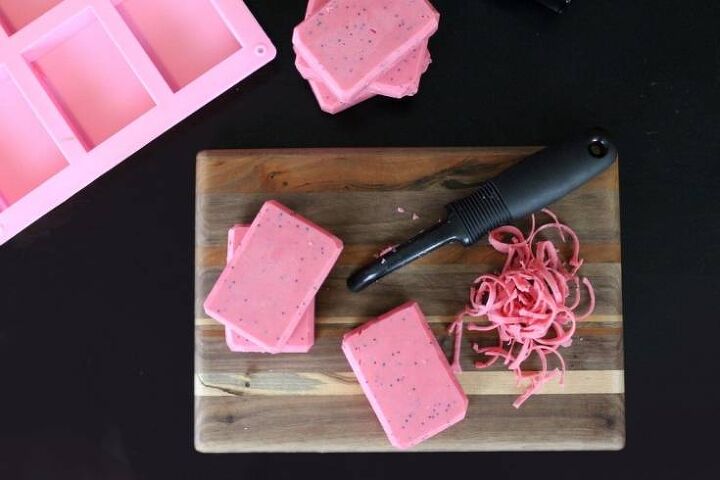









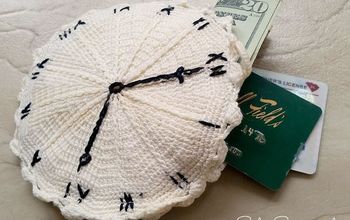

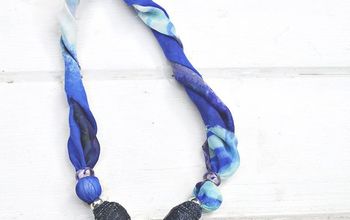


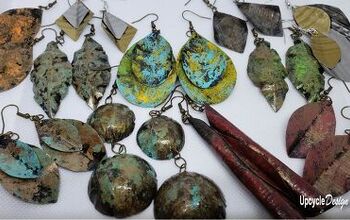


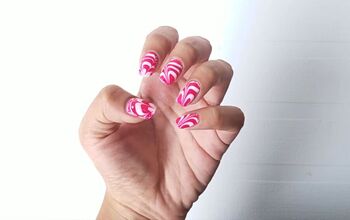


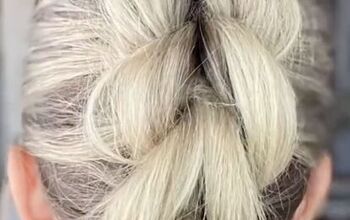

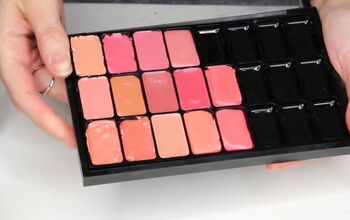


Comments
Join the conversation